My Annotated List of Shakespeare Editions – Complete Works
November 17, 2013 § 2 Comments
Annotated List of Complete Shakespeare Editions
Kurt Daw, November 2013
To many novices, the biggest shock about the plays of Shakespeare is discovering how different one edition can be from another. “Why don’t they just print what he wrote?” readers ask in despair. The very good reason is that no one is sure exactly what that was. There are NO definitive scripts. We have no manuscript versions, and the oldest printed editions contain obvious mistakes, problems and omissions. Where more than one Renaissance edition of a play exists (and some exist in two, three and even four substantive versions) different words, different speeches and sometimes completely different scenes exist. The variances can be so great in some cases, like the two substantially different versions of King Lear, that recent editors have treated them as separate plays.
Renowned editor and scholar Stephen Orgel has argued that plays in the early modern era were never absolutely fixed, but were considered collaborations between playwrights, theatre companies, and printers. Our modern idea of a definitive text did not exist. Stephen Greenblatt summarized this situation as unresolvable in his famous essay “The Dream of the Master Text.”
An Edition is a Version
All editions are versions, guided by different editorial aims about what they should accomplish.
With the advent of digital technologies, facsimiles (something like a photocopy) of the earliest print editions are easily and widely available online. These require some bibliographic expertise to interpret, however, because different spelling, typesetting, and printing conventions of the time make them shockingly difficult to read and use.
A page from the First Folio
Although purists argue that the plays are fundamentally changed by doing so, much of the difficulty of using facsimiles is alleviated with texts that use modern conventions for spelling, punctuation and printing. Even once those are in place, however, the issues are just beginning. If two people sit side-by-side with two different editions, there is no guarantee that the words will be the same, that the content of the scene will be identical or even that the characters in a scene will have the same name. ALL editors have to make judgments about which options to include and which to exclude from their edition. They have to decide what mistakes were made in the Renaissance printings and how best to repair them.
They also have to make educated guesses about what is important and useful to the users of their edition in order to understand and appreciate it. Because of that most editions also come with supplementary materials. These constitute notes about the meaning of words, phrases and references in the plays. They may (but do not always) include explanations about what textual variants were available and how the editor determined which ones to use. They may also include such things as biographic materials about Shakespeare, stage histories of the play, and essays about modern interpretations.
When you buy a Shakespeare play or complete works, because Shakespeare is not getting any royalties, what you are paying for is the editorial expertise. (The truth is that you mostly get what you pay for.) The range of choices can be bewildering. Below is my subjectively annotated list of the major editions of the Complete Works currently available, along with their strengths and weaknesses. (I will discuss major play series which publish titles in individual editions in a subsequent separate post.)
Globe edition (1864), an abridged version of the Cambridge edition (1863-6)
Dozens of different editions of Shakespeare’s plays exist, but the overwhelming odds are that the one(s) you already own are reprints of the 1864 Globe edition, edited by William G. Clark, and William A. Wright, with John Glover. If your edition does not clearly say who edited it, then it is almost certainly the Globe edition. There are a lot of reasons that this may be so: When it was published as a single-volume, popular version of the weighty Cambridge edition (stripped of its notes and apparatus), it was the best scholarship available. It remained the standard edition for over a century and almost all criticism was keyed to its line numbers. It was the first true academic edition backed by the reputation of a great university. But all of that pales in comparison to the simple reason it continues to dominate the market today: It is long out of copyright and its text can be reproduced inexpensively. In fact, with no printing costs attached, it is available all over the internet for free.
In truth, if all you want to do is give a play a quick read, it is probably good enough, which is why it still flourishes. Nonetheless, it has some weaknesses that make it problematic. The big one is that it has no notes or explanations. It is just a playscript. As many a student trying to save a few dollars has discovered, that renders it almost useless for an initial encounter with Shakespeare. It also makes almost all the editorial changes invisible. The editors were prone to extensive, but unexplained, emendation. They repaired word choices they found unclear, poetic rhythms they assumed were incorrect, and material they found indecorous, but in a way that completely escapes the average reader. For those who need a greater degree of transparency about editorial intervention, which includes all actors along with most serious students, this will not do.
The good news is, because of its electronic availability for free, there is no reason ever to purchase a copy. It is easily consulted online if you want to know what this edition says.
One of the innumerable forms in which the Globe edition is available.
The Riverside Shakespeare, 2nd Ed. (1997)
The Riverside is a large, single volume edition of the complete plays that became a favorite of English departments as soon as it was originally issued in 1973. A substantial reworking resulted in a second edition in the late ’90s. In editions of Complete Works, the supplemental materials are meant to apply to the entire canon, so they are informative about social context but not particularly tied to any specific play. The major of notes are definitional glosses on the text. Textual variants are recorded at the end of the play. There is not much commentary on the play, so the text largely stands on its own. Throughout the punctuation is considerably lightened from what you find in other editions.
Once the industry standard for a complete works, it is now largely superseded by newer editions below. (Because of that, however, you can sometimes find quite inexpensive used editions.)
University of Chicago professor David Bevington is something of a legend in the field of Shakespeare studies. He is the only modern editor to have single-handedly edited the entire canon for a major publisher. Surprisingly, it is much less ideocentric than comparable editions where multiple editors are involved. The supplementary materials are again meant to apply to the entire cannon, rather than being specific to any particular play, but are excellent. In a short, but very useful, essay Bevington discusses Shakespeare’s use of language in greater depth, and with greater insight, than any other editor. The latest edition’s greatest strength is another essay that sorts criticism from a vast range of perspectives into recognizable categories and approaches.
While in many ways quite conservative editorially, Bevington introduces some very helpful devices. Line numbers appear for all lines that have notes attached rather than every ten lines in other editions. The amount of time that saves counting up and down is alone enough to endear him to students! Bevington has practical theatrical experience but that does not color the notes attached to specific plays, which are more literary in nature. The dense introductory essays to the plays, however, discuss broad interpretive trends from a very theatrical perspective. (The edited text is also available in individual editions, which do have the notes and introduction but do not have the rich introductory materials of the Complete Works.)
The Oxford set off a revolution in Shakespeare editorial practice by prioritizing the “revisions” included in the Folio over the quartos as control texts. Previous practice had been to get as close to Shakespeare’s original manuscript as possible, generally emphasizing the earliest “reliable” quarto text. It has long been recognized that the Folio was heavily influenced by promptbooks from the theatre, so major changes introduced in it were thought of as theatrical corruptions to Shakespeare’s work. Wells and Taylor argued that Shakespeare was a working member of the acting company, however, and if the Folio records revisions made to the script, Shakespeare surely approved them. He probably actually wrote them.
Their new perspective resulted in a vastly different edition (or rather, two editions, since it is published in both modern and old spelling versions) than anything that had preceded it. The Oxford edition has as much commentary, and as many notes, as the Riverside or Bevington. Oddly, however, the publisher printed the complete works in a compact volume and then moved all the supporting materials to a companion volume. You have to buy two books if want access the scholarship, some of which is very theatrically oriented and might be really helpful to actors if it was better known.
(Caution: Individual plays are published separately as the Oxford Shakespeare, but these are separate versions with different editors.)
Oxford‘s mystifying decision to separate notes and commentary from text created an opening which Norton, the American publisher best known for collegiate anthologies, rapidly exploited. They licensed the Oxford‘s play texts and used them for the basis of their edition, which does come complete with extensive notes and commentary – but not the Oxford notes. Instead they brought in a new editorial team led by Stephen Greenblatt to supply entirely new supplementary materials. (They also made some minor adjustments to the most eccentric editorial decisions, especially the renaming of Falstaff, which they reversed.) The Norton is the most widely adopted of all current Complete Works editions. It has extensive textual glosses – and light contextual notes – available right next to the text. It restores some diacritical marks, mostly just for sounded past tense endings, which does give actors occasional scansion help. All notes, however, seem more theatrical than competitive editions.
Complete Pelican Shakespeare (2002)
Actors either love or hate this edition. It is a very compact version, made possible by a paucity of introductory materials, short pithy notes and a lot of small type. To many those are bugs, but some actors think they are features because (like the Oxford compact edition) it is light enough to carry into rehearsals. The layout is elegant and uncluttered. Glosses are relegated to the bottom of the page. The general editors are Stephen Orgel and A.R. Braunmuller. Co-editor Stephen Orgel is one of the most erudite scholars working today, but because of the concise format, little of that insight is captured in this edition. You have to read his essays published elsewhere to see and understand his skill.
The most recent of the complete editions is a version by Jonathan Bate and Eric Rasmussen for MacMillan UK and marketed as the Royal Shakespeare Company edition. Generally recognizing the revolution caused by the Oxford, but asserting Wells and Taylor did not go far enough, the RSC editors flatly state that what they have produced is an edited version of the Folio. Unlike all the previous work done to try to get to “the plays as they came from Shakespeare’s hand” or in Oxford’s case, “the plays as they were first performed” the RSC editors built their edition around a material, rather than platonic, book. Although that may lead in practice to many of the same choices as are contained in the Oxford, the logic is different getting there. The notes, therefore, are a reversion to a more bibliographic set of concerns. Interestingly, however, because of the association with the RSC, the introductory materials are much more theatrical. There is also some very interesting material in brief introductions to the plays including line counts, and percentage of the play those occupy, for the major characters and some other revealing statistics. In the US it is much more expensive that comparable editions, but it is a notable addition to the field.
The Arden Shakespeare Complete Works (2011)
By far, the most scholarly and admired Shakespeare series is the Arden, of which the single-title editions are indispensable for their superb introductions, notes, and glosses. Arden gathers their edited playtexts into a single large edition, but it is completely shorn of all the scholarship and contextual materials that make the series famous. It is the least useful of all Complete Works. (Although the date of the second edition is recent, the collected contents generally date from the ’80s and ’90s.)
Decision: I give a slight edge to the Norton, for its excellent supplementary materials and actor-friendly notes. A close second would be the Bevington, with supplementary materials that are superior to the Norton’s but more literarily oriented notes, which do not help the actor enough.
Disclaimer: Titles of editions, above, are linked to Amazon.com, to which I have an affiliation. This means if you decide to make a purchase from them, I will get a sales commission. But that doesn’t mean my opinion is for sale. Every affiliate link on my blog is to products that I’ve personally used and found useful. Of course, all these volumes are available from numerous other sources as well.




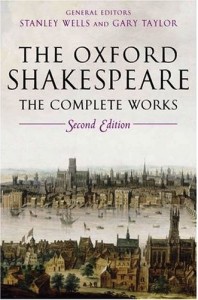
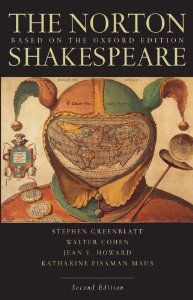
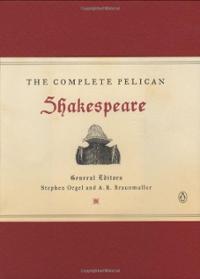
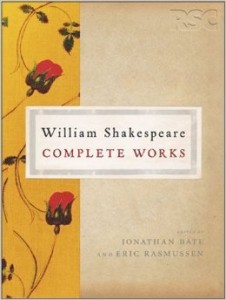
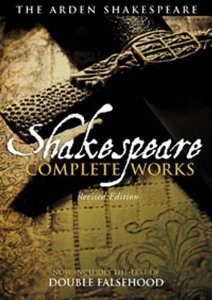
Hello
How would you compare the Norton 3rd edition to the Bevington 7th edition?
thank you very much indeed. I’m a non-actor and just finished listening to Prof Marc C Conner’s Great Courses How to Read and Understand Shakespeare – I’m kind of on fire, and based on your observations I’m going with Bevington. Cheers, Jeff